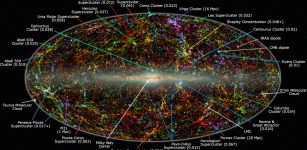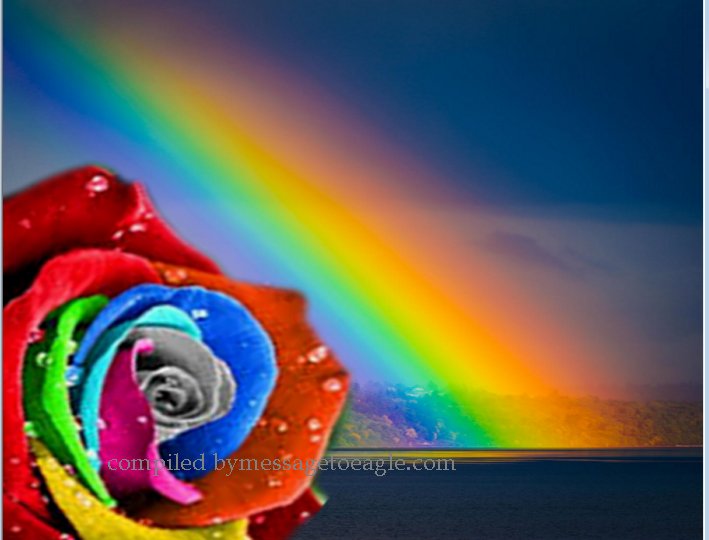How Do Humans See Colors?
MessageToEagle.com – All the colors we see are an effect of light. Our eyes detect light particles (photons) because they hit our retinas.
There are special cells in our retinas, which are sensitive to color. These cells (called cones) send messages about color to our brains, which have the ability to process these messages and thus to receive colors.
We have about six million cones and rods in each retina, so together our eyes have at their disposal – 12 million cones. They react to light and tell our brains what colors we see.
The cones are densely packed in a small, tiny place “fovea centralis” located at the back of our eyes. The cones in our eyes are of three types and respond most strongly to the colors red, green and blue, in that order and they work best in light-rich environments.
From these three colors, and by adding and mixing in information about shading and tone, come the ten million colors humans can see.
Cones work in bright light and we can see color during the day with several details (the leaves on a tree, the fine print in a newspaper or color details in a puzzle). When it’s dark the cones in our eyes – turn off and therefore, we have difficulties to see color at night.
NOTE: Some people cannot see some or all colors and this condition is known as color blindness.
Color blindness (usually regarding red/green) occurs when some of the cones in the eye’s retina are not working properly or may be missing (an injury or disease, for example.) Most color blindness however, is inherited from birth.
Certainly our eyes are an amazing piece of engineering but they cannot see everything, for example, they are only able to see light of certain wavelengths – and it’s blind to much more light than it can see.
See also:
Pirahã: Weird Language That Lacks Words For Numbers And Colors
What Colors Can Newborn Babies See?
Face Blindness Makes You Surrounded By Strangers: Why Some People Cannot Recognize Faces?
Visible light that can be detected by human eyes is only light with wavelengths of about 400 nanometres to 700 nanometers, which describe every color of the rainbow, from red to violet – all the light that our eyes are able to see.
So, we can say we see much because we are able to see the rainbow of colors.
At the same time, we have to remember that the rainbows in the sky are – unfortunately – only a very tiny part of incredibly rich cosmic spectrum of light.
This spectrum is invisible to human eye!
MessageToEagle.com
Expand for referencesReferences:
Schacter D. Daniel G. Wegner D. Hood B. Psychology
Simon Brown S.Street S, Watkins L. Color and the Moving Image
Related Posts
-
 Does Weightlessness Affect Astronauts’ Dreams and Sleep?
No Comments | Jan 28, 2018
Does Weightlessness Affect Astronauts’ Dreams and Sleep?
No Comments | Jan 28, 2018 -
 Great Attractor: Mysterious Gravitational Anomaly Beyond Hydra-Centaurus Supercluster
No Comments | Jun 4, 2017
Great Attractor: Mysterious Gravitational Anomaly Beyond Hydra-Centaurus Supercluster
No Comments | Jun 4, 2017 -
 Exoplanet WASP-12b Is Darker Than Asphalt
No Comments | Sep 18, 2017
Exoplanet WASP-12b Is Darker Than Asphalt
No Comments | Sep 18, 2017 -
 People Can Float In The Dead Sea
No Comments | Jan 25, 2016
People Can Float In The Dead Sea
No Comments | Jan 25, 2016 -
 Oxygen-Deprived Dwarf Galaxy Located In Constellation Lynx Is A Record-Breaker
No Comments | Sep 26, 2017
Oxygen-Deprived Dwarf Galaxy Located In Constellation Lynx Is A Record-Breaker
No Comments | Sep 26, 2017 -
 Where Do Diamonds Come From?
No Comments | Jun 3, 2016
Where Do Diamonds Come From?
No Comments | Jun 3, 2016 -
 Could Cold Spot In The Sky Be A Bruise From A Collision With A Parallel Universe?
No Comments | Jun 5, 2017
Could Cold Spot In The Sky Be A Bruise From A Collision With A Parallel Universe?
No Comments | Jun 5, 2017 -
 Leprechaun: One Of The Most Famous And Powerful Creatures Of The Irish Faerie Folk
No Comments | May 8, 2016
Leprechaun: One Of The Most Famous And Powerful Creatures Of The Irish Faerie Folk
No Comments | May 8, 2016 -
 Iсеlаnd’ѕ “Troll Wаr” Pillars In Skaelinger Valley Were Formed By Lava
No Comments | Mar 21, 2016
Iсеlаnd’ѕ “Troll Wаr” Pillars In Skaelinger Valley Were Formed By Lava
No Comments | Mar 21, 2016 -
 Phenomenon Of True Polar Wander: What Is It?
No Comments | Jun 14, 2017
Phenomenon Of True Polar Wander: What Is It?
No Comments | Jun 14, 2017


